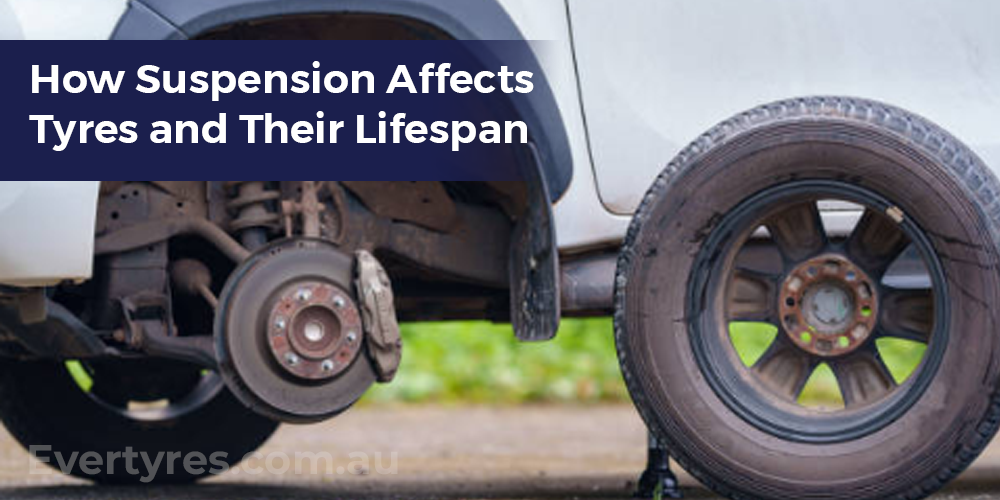Vehicle's suspension system plays a pivotal role not just in delivering a smooth ride but also in determining the lifespan of its tyres. The intricate relationship between these components significantly affects the wear and tear experienced by tyres over time. Delving into the interconnected world of suspension and tyres is crucial for maintaining optimal performance and extending the life of these critical elements.
Impact of Suspension on Tyre Wear
1. Accelerated Tyre Aging: The constant stress and vibrations caused by a faulty suspension can accelerate the aging process of tyres. The rubber compounds in tyres are designed to withstand a certain amount of wear and tear, but excessive stress can lead to premature cracking and hardening of the rubber, reducing the tyre's lifespan.
2. Increased Risk of Tyre Damage: A damaged or worn-out suspension can compromise a vehicle's handling and stability, increasing the risk of tyre damage. For instance, if the suspension allows excessive body roll, the tyres may rub against curbs or other objects, causing punctures or sidewall damage. A poorly maintained or misaligned suspension system can cause uneven tyre wear. Misalignment, for instance, leads to excessive wear on specific areas of the tyre tread, reducing its lifespan.
3. Camber and Toe: Incorrect camber and toe settings affect the angle at which the tyre meets the road. Excessive positive or negative camber can wear out the tyre edges prematurely, while improper toe settings may cause feathering, where the tyre tread wears unevenly in a sawtooth pattern.
4. Tyre Pressure: Suspension Impact: A well-functioning suspension helps distribute the vehicle's weight evenly across all tyres. However, faulty suspensions or worn-out components might result in uneven weight distribution, leading to differences in tyre pressure among wheels.
5. Underinflation/Overinflation: Uneven pressure puts additional stress on tyres. Underinflated tyres cause increased sidewall flexing, leading to overheating and quicker wear. Overinflated tyres reduce the contact patch with the road, decreasing traction and potentially causing the tyre to wear out in the center.
6. Shock Absorption: Road Impact: The suspension system's ability to absorb shocks from bumps and irregularities in the road surface directly impacts tyre life. A well-tuned suspension reduces the force transmitted to the tyres, minimizing the risk of damage or punctures.
7. Vibrations: Excessive vibrations due to a poorly functioning suspension can accelerate tyre wear. Vibrations cause increased friction between the tyre and the road, wearing down the tread more quickly.
8. Handling and Performance: Cornering Stability: Suspension settings influence a vehicle's handling during cornering. Properly adjusted suspensions ensure better tyre contact with the road, improving grip and reducing tyre scrubbing, which can wear tyres faster.A poorly maintained suspension can cause uneven tyre wear, leading to premature tyre replacement. When the suspension struggles to absorb road impacts effectively, tyres are subjected to uneven forces, resulting in uneven tread wear patterns. This can manifest as localized areas of excessive wear, such as excessive wear on the inner or outer edges of the tyre tread.
9. Braking and Acceleration: Effective suspensions aid in maintaining traction during braking and acceleration, preventing tyre slippage and unnecessary wear.
Signs of Suspension Problems
There are a number of signs that can indicate that your vehicle's suspension system is in need of repair or replacement, including:
1. Bouncing or swaying: If your vehicle bounces or sways excessively over bumps or potholes, it may be a sign of worn-out springs or shock absorbers.
2. Pulling to one side: If your vehicle pulls to one side when driving on a straight road, it may be a sign of misaligned tires or a problem with the suspension system.
3. Uneven tire wear: If your tires are wearing unevenly, it may be a sign of suspension problems, misaligned tires, or improper inflation.
4. Noise: If you hear clunking, rattling, or squeaking noises coming from the suspension system, it may be a sign of worn-out or damaged components.
Maintaining Suspension for Optimal Tyre Health
Maintaining Tyre Longevity through Suspension Care
1. Regular Inspections and Maintenance
One of the best ways to protect your tyres and extend their lifespan is to have your vehicle's suspension system regularly checked and maintained by a qualified mechanic. ensuring your safety on the road begins with frequent tyre inspections. It's a simple time investment that can save lives and money. Choosing a free tyre check-up service from Evertyres will help you address these problems and guarantee that your tyres are in good condition. Your safety is key, and maintaining your tyres is an important step towards safer road trips. Don't forget this critical part of road safety; contact us immediately for your free Tyre check-up and drive with confidence. Periodic checks for worn-out bushings, ball joints, and shock absorbers can prevent premature tyre wear.
2. Wheel Alignment and Balancing
Scheduled wheel alignments ensure proper camber, toe, and caster angles, preventing uneven tyre wear. Additionally, balancing tyres helps distribute weight evenly, reducing unnecessary strain on specific tyres.
3. Tyre Pressure Management
Regularly monitoring and maintaining optimal tyre pressure according to manufacturer specifications is vital. Proper inflation levels prevent excessive wear caused by underinflation or overinflation.
4. Quality Suspension Components
Investing in high-quality suspension parts when replacements are necessary is essential. Quality components ensure durability and proper functionality, contributing to extended tyre life.
5. Rotate your tyres regularly
Rotating your tyres helps to distribute wear evenly across all four tyres. Be sure to rotate your tyres every 5,000 to 7,500 miles, or according to the manufacturer's recommendation.
Here are some additional tips for extending tyre lifespan:
Avoid aggressive driving: Hard braking, acceleration, and cornering can all put undue stress on your tyres and lead to premature wear.
Drive at moderate speeds: Exceeding the speed rating of your tyres can also lead to premature wear and damage.
Use the correct tyres for your vehicle from good services. When it comes to finding the ideal tyres, we recommend exploring the wide range of options available at Evertyres. Visit our website to discover a diverse selection of high-quality tyres that cater to all your needs.
Driving conditions: Be sure to choose tyres that are designed for your vehicle type and the driving conditions you typically encounter
Store your tyres properly: If you are removing your tires for storage, be sure to store them in a cool, dry place.
Conclusion:
The symbiotic relationship between a vehicle's suspension system and its tyres is integral to ensuring an optimal driving experience and prolonging tyre lifespan. A well-maintained suspension system absorbs shocks, maintains proper alignment, distributes weight evenly, and enhances handling, all of which collectively contribute to reducing unnecessary wear on tyres.
By prioritizing regular maintenance, conducting inspections, and investing in quality suspension components, vehicle owners can effectively preserve their tyres, optimizing their performance and extending their longevity. Understanding and maintaining this delicate balance between suspension and tyres is key to enjoying a smoother, safer, and more cost-effective driving experience for the long term.













